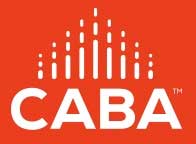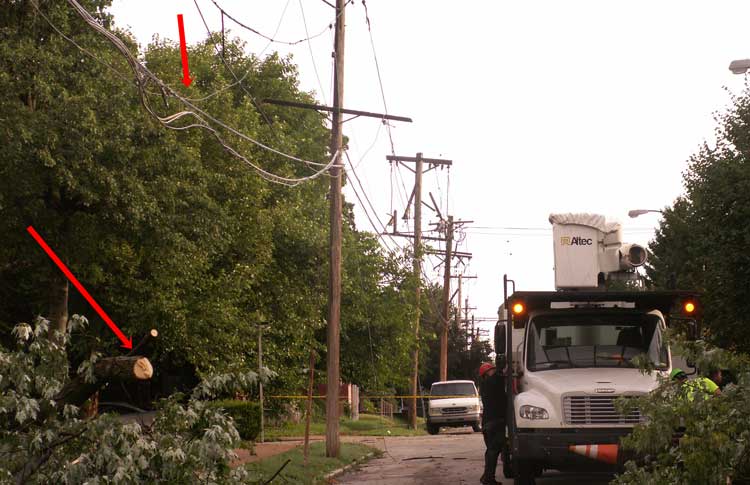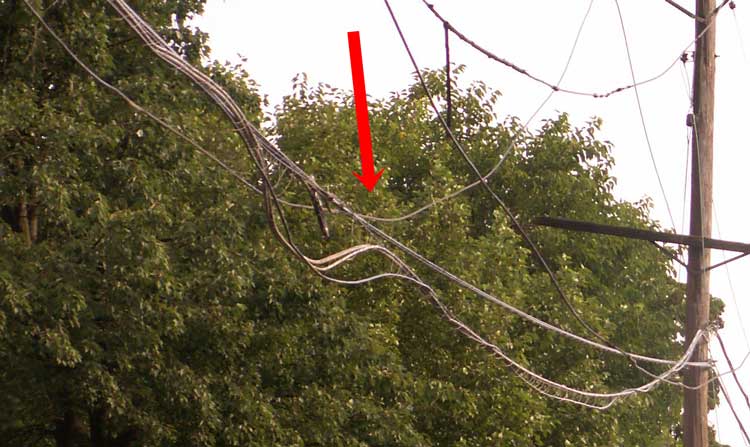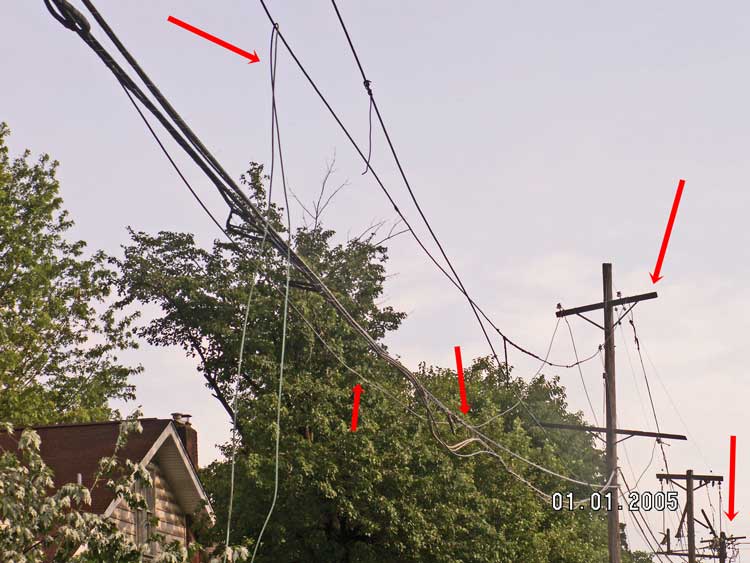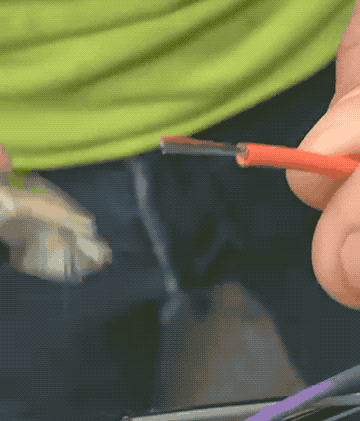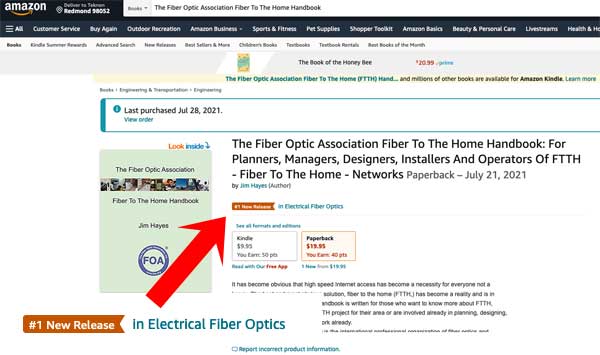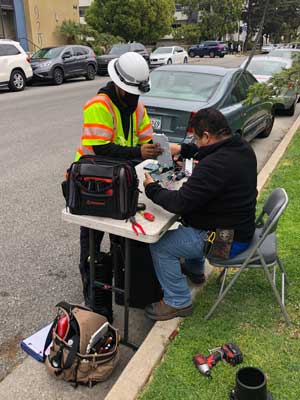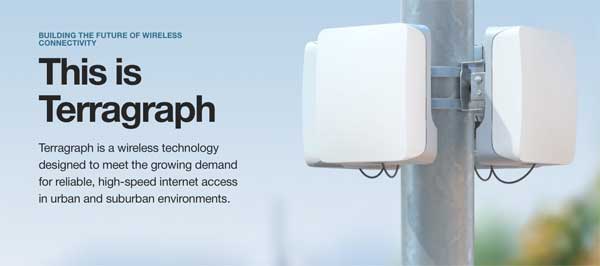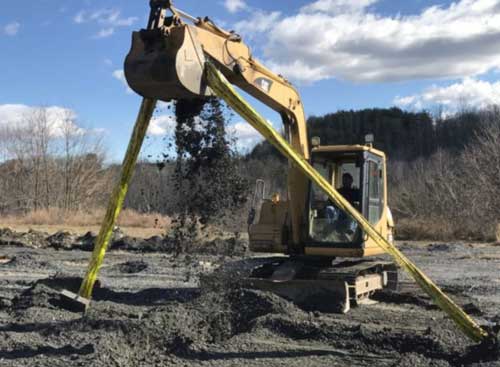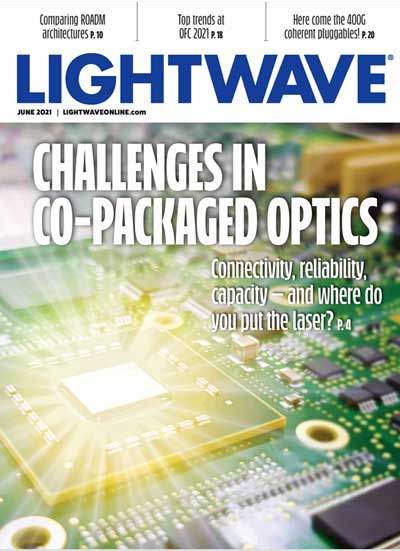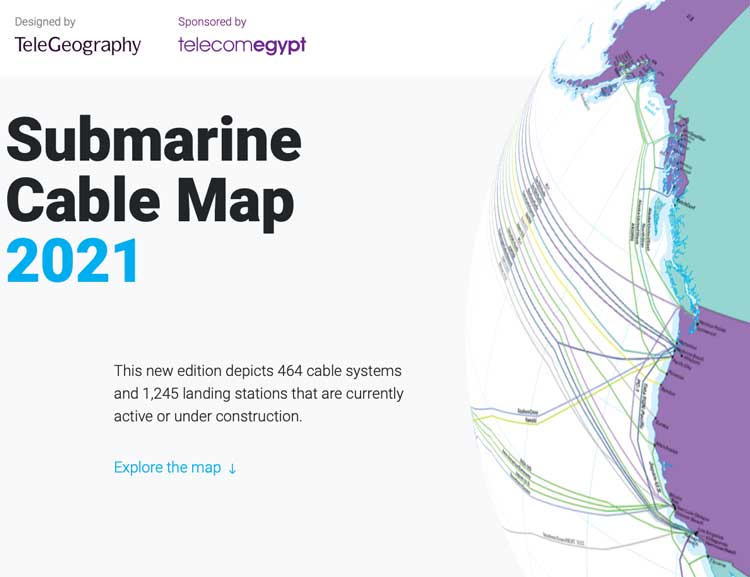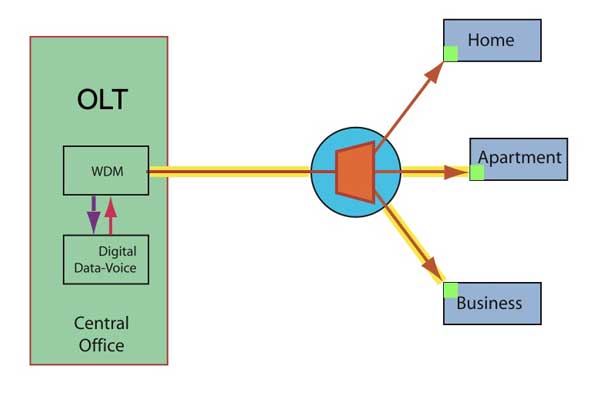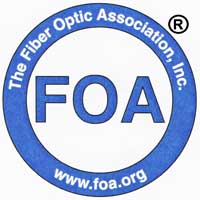
 August 2021 |
|||||||||||||||||
Search the FOA website FOA Home Page Contact Us |
Sign up for the FOA eMail Newsletter Privacy Policy Sections
News Technical Worth Reading Q&A Training/FiberU Resoures Safety About |
||||||||||||||||
FeaturesHow To Build Rural BroadbandNew FOA Video - Fiber At Electrical Utilities Cost of Rural FTTH Wind damage To Aerial Cables Dangerous Fiber FOA School Network Grows FOA FTTH Handbook a "Best Seller" Updates - FOA Guide and Videos Job Opportunity FOA OJT Program Newsletter SectionsClick on any link to jump to that sectionNews Google Fiber Drops TV Why Overlash Aerial Cables? New Fiber Magazine in Spanish How Much Does A Cable Installer Earn? Can Facebook Disrupt Wireless? Market Tape That Works Lightwave is Back New Submarine Cable Map Technical 100G Coherent PONs Properly Managed Fiber Pedestal What Does "Telephone Symbol" Mean? Are 850 LEDs Extinct? Grounding Rules Loss Budget Calculator Worth Reading Lots of interesting articles Q&A Questions from our readers Training/FiberU New Fiber U MiniCourses, schools, remote OTDR for training, making training classroom safe, onine training, materials, more Resources New FOA YouTube Videos. Safety About FOA Certifications: 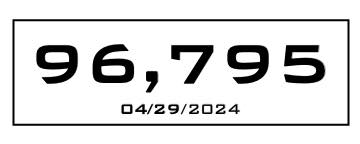 Special offer - 1/3 Off Renewal Jobs
Where Are The Jobs In Fiber Optics? FOA talks about all the applications for fiber optics, what jobs involve and the qualifications for the workers in the field in this YouTube video. Want to be notified when the FOA Newsletter is updated? Sign up for the FOA eMail Newsletter. You can also sign up from your cell phone: text "FOA" to 22828 (usual text message charges apply) Trademarks: The FOA CFOT® (Certified Fiber Optic Technician) and Fiber U® (the FOA online self-study program) are registered trademarks of the FOA.  Want to know more about fiber optics? Study for FOA certifications? Free Self-Study Programs are on "Fiber U®." Looking for specific information? Here's the largest technical reference on the web: The FOA Online Fiber Optic Reference Guide. 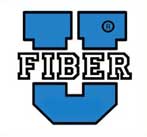 Free online self-study programs on many fiber optics and cabling topics are available at Fiber U, FOA's online web-based training website. FOA Reference Books Available Printed or eBooks The fiber book is available in Spanish and French 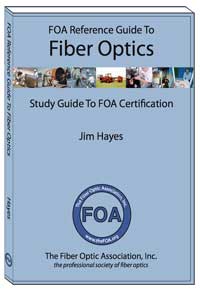
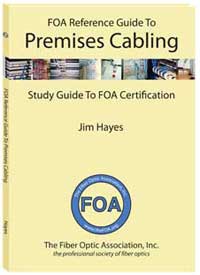
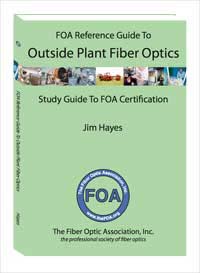
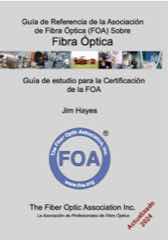 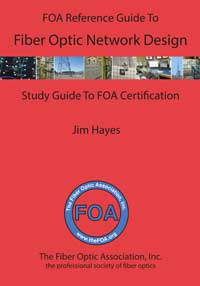
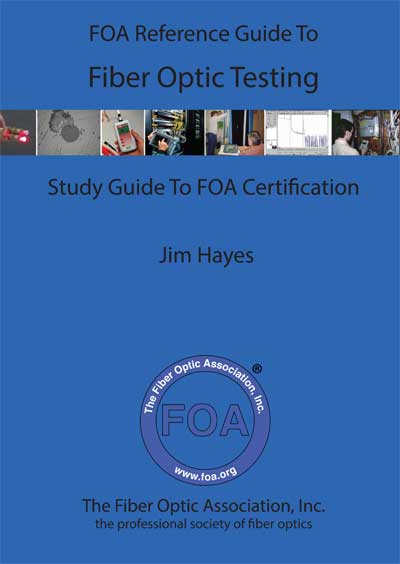
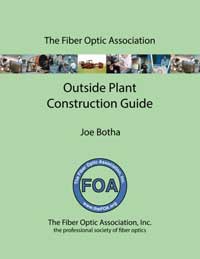
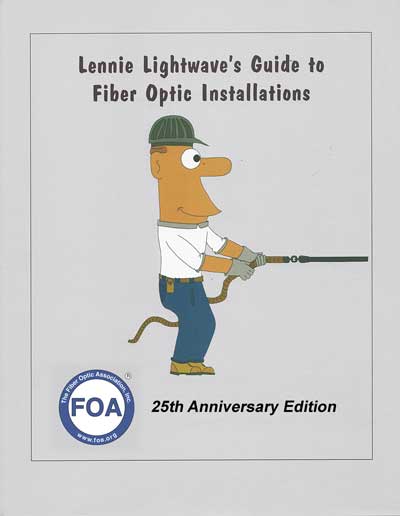 Lennie and Uncle Ted's Guides are now also available as free iBooks on iTunes. 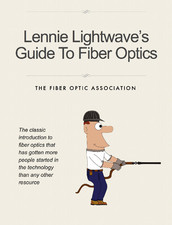
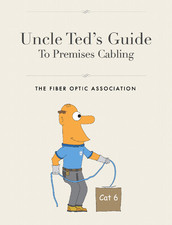 Click on any of the books to learn more.
FOA Videos on FOA is a member of: The FOA Newsletter is edited by Jim Hayes - send your stories, leads, ideas, comments to <jim @ foa.org>  Search the FOA Website With DuckDuckGo
1/13, 2/13, 3/13, 4/13, 5/13, 6/13, 7/13, 8/13, 9/13, 10/13, 11/13, 12/13 1/12 , 2/12, 3/12, 4/12, 6/12, 7/12, 8/12, 9/12, 10/12, 11/12, 12/12 1/11 , 2/11, 3/11, 4/11, 6/11, 7/11, 8/11, 9/11, 10/11, 11/11, 12/11, 1/10 , 2/10, 3/10, 4/10, 05/10, 07/10, 08/10, 09/10, 10/10, 11/10 1/09 , 2/09, 3/09, 04/09, 05/09, 07/09, 08/09, 09/09, 10/09, 11/09, 12/09 1/08 , 2/08, 3/08, 4/08, 5/08, 6/08, 7/08, 8/08, 09/08, 10/08, 11/08, 12/08 12/07 , 11/07, 10/07, 09/07, 08/07, 07/07, 06/07, 05/07, 04/07, 03/07, 2/07, 1/07 12/06 , 11/06, 10/06, 09/06, 8/06, 7/06, 6/06, 5/06, 4/06, 3/06, 2/06, 1/06, 12/05 ,11/05, 10/05, 09/05, 08/05, 07/05, 6/05, 5/05, 4/05, 2/05, 01/05, 12/04 , 10/04, 9/04, 8/04, 7/04, 6/04, 5/04, 4/04, 3/04, 1/04, 12/03 , 11/03 10/03 9/03, 8/03, 7/03, 6/03, 3/03, 10/02 , 8/02, 5/02 Current Issue of FOA Newsletter Time To Renew Your FOA Certifications?To keep your FOA certifications active, you need to renew them when they expire. Now we have a new more convenient way to renew - an online store at Paypal - where you can quickly and conveniently use your PayPal account or your credit card to renew your certifications.PayPal is available worldwide Join
FOA On Social Media
 FOA has four LinkedIn Groups FOA - official page on LinkedIn FOA - covers FOA, technology and jobs in the fiber optic marketplace FOA Fiber Optic Training - open to all, covers fiber optic technology and training topics Grupo de La Asociación de Fibra Óptica FOA (Español) SPECIAL OFFER - 1/3 Off Your Certification Renewal Cost In the near future, there will be a requirement for continuing education to renew your FOA certifications. FOA is testing an option for renewals where you take a short Fiber U online course.If you would like to help FOA test this option, you can save 1/3 the cost of your renewal. Go here to take the Fiber U CFOT Renewal Course: |
FOA Newsletter - FeaturesHow To Build Rural Broadband, Learning From HistoryYou
can spend hours reading about the lack of broadband in
rural America. Here are two recent examples from the FCC
and The
Verge. But while AT&T CEO John Stankey told Wall
St. analysts that he doesn't think there is any way to
extend fiber to rural areas at all, FOA has worked with
dozens of groups wanting to build rural broadband and
documented several DIY
FTTH systems in the FOA Guide. We have also
documented in the FOA Newsletter (June
2021) ways that make rural broadband more feasible
using new technologies like remote OLTs for GPON networks.
As we continue to research rural broadband strategies and technologies, we continue to work on other projects. One of those projects involves assisting EPRI (the Electric Power Research Institute, the electrical utilities "Bell Labs" or "Telcordia") with their strategic plans for fiber optics in their networks. It occurred to us that installing rural fiber networks was similar to the development of rural electrical networks in America a century ago. So
we began researching the electrification of rural America.
In our research, we found a most interesting article
called "Rural
Electrification" by Robert T. Beall, an economist at
the US Department of Agriculture in the 1940 USDA Yearbook
of Agriculture on the USDA website. Reading this
(and we highly recommend you read it too), it becomes
obvious that rural electrification and rural broadband
build-out have many similarities. 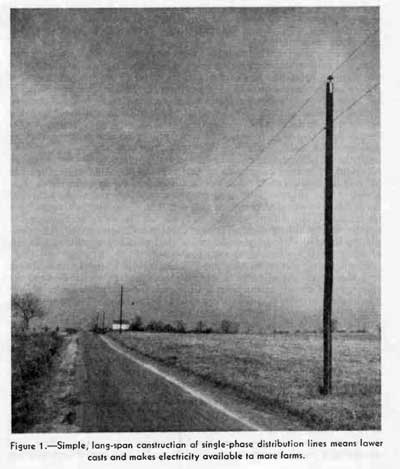 Rural Electrical Cables From the 1940 USDA Yearbook of Agriculture According
to the Beall article, in 1925 only 3.2% of America’s 6.3
million farms had electricity. Ten years later, it had
only grown to 10.9%, in part due to the depression but
also due to the inherent problem with rural areas,
economics. Beall’s article quotes a report on the problem. Beall
then comments: Inasmuch as the private utility companies
own and control well over 90 percent of the electric-power
industry in the United States, the extension of lines into
rural areas prior to 1935 depended primarily on the
willingness of these companies to serve farmers. Sound
familiar? But
the industry felt no responsibility to find out whether
construction in rural areas might not be simpler and less
expensive than that in urban centers and therefore require
less capital investment per farm. As has already been indicated, the principal type of borrower of R.E.A. funds is the cooperative, nonprofit association of rural residents organized for the specific purpose of constructing and operating a rural electric system. Although this type of organization for the distribution of electric power in rural areas has been widely used in certain foreign countries, notably Denmark, Sweden, and Finland, it was almost unknown in the United States until the establishment of the Government's rural-electrification program.
Coops also learned how to lower costs for building
networks by simplifying aerial cable systems and using
long-span construction. Some of their techniques allowed
building networks at less than half the cost of
traditional urban/suburban networks. Now
go back and reread the last half-dozen paragraphs,
replacing "electrical" with "broadband." Uncanny, isn't
it? Even more so now that the current US administration
has included $50 billion for broadband expansion in the
current infrastructure bill. REA (now RUS - Rural Utilities Service) still exists and has expanded its scope to include telecommunications and water. FOA has been on conference programs with RUS people and have found they know the problem and understand that fiber is the solution. Part
of the solution depends on the same technical changes
suggested for rural electrification, not copying what
works in urban areas but rethinking FTTH technology for
rural areas, for example using ADSS cable along power
lines with remote OLTs and sharing fibers with other
communications users, including the electrical coops
themselves , to reduce the costs of building FTTH. Of
course, being a large government program, there are going
to be problems making sure the infrastructure bill money
goes to the right places. The last try at funding rural
broadband, RDOF (Rural Digital Opportunity Fund), appears
to have approved funding to a number of questionable
projects. In a recent FCC press release (FCC
Makes Available Over 311 Million For Broadband in 36
States, While Taking Steps To Clean Up The RDOF Program)
some of those questionable projects were discussed. As a result of today’s announcement, 48 broadband providers will bring 1 Gbps broadband speeds to nearly 200,000 homes and businesses over the next 10 years. At the same time, the FCC also took steps to clean up the Rural Digital Opportunity Fund program. In light of complaints that the program was poised to fund broadband to parking lots and well-served urban areas, the FCC sent letters to 197 winning bidders. The letters offer providers an opportunity to withdraw their funding requests from those places already with service or where significant questions of waste have been raised. "Rural Electrification" is fascinating reading, covering the development of rural electrical coops. We recommend it highly, especially for rural groups. FOA has found that many people in the industry are unfamiliar with how utilities use fiber optics, so we created a new YouTube Lecture on the subject. New FOA YouTube Lecture: Fiber Optics At Electrical UtilitiesElectrical utilities were early adopters of fiber optics, not far behind the telcos. The advantages of fiber optics for long distance networks and high speed data were important, but its immunity to electrical interference meant that fiber optic cables could be installed near high voltage electrical wires without problems. It even allowed creating electrical conductors with fiber optics in the center - OPGW, optical fiber ground wire.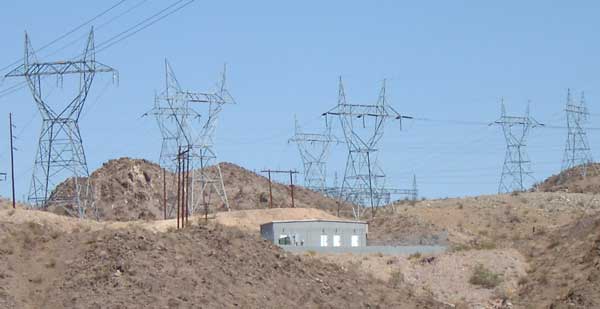 Lecture 67 Fiber Optics At Electrical Utilities This new FOA video covers the applications of fiber optics at electrical utilities, looks at the various ways they mix communications on fiber with power transmission and distribution, and talks about the role of electrical utilities in delivering broadband, especially to rural areas. Did you know YouTube can close caption videos in many languages? Here are directions. What Does It Cost To Connect A Rural Customer With FIber?An article about Shenandoah Telecommunications Company in Light Reading provides some useful data on this topic. In the article is a graphic showing Shentel's plans for broadband for customers in their Virginia, West Virginia, Maryland and Pennsylvania territory.In a table they quote prices:
The fiber cost in similar to other rural networks FOA knows. This is not a bad place to begin when starting to plan an FTTH project. Wind
Damage To Aerial Cables In St. Louis Creates High Voltage
Danger
|
||||||||||||||||
|
|
Google Fiber Drops TV Service In Austin and Atlanta, Concentrates on InternetGoogle Fiber is dropping its TV service in Austin, saying what many in the entertainment industry already know, that people are moving to streaming services and away from traditional TV packages with hundreds of channels few subscribers ever watch. Google Fiber TV services will end in Austin and Atlanta by Nov. 30. The company said it will provide affected customers will whole-home WiFi with Google WiFi, streaming capabilities through Chromecast with Google TV, and help in transitioning to streaming services of their choosing.Read more in the Austin American-Statesman It seems if you were watching closely, you would have known this 18 months ago when Google announced it was dropping TV services on the Google Fiber website. In the same announcement, they said they would begin offering fuboTV streaming service as an option to those signing up for Google Fiber. 100G Coherent PON networks? Read more in Tech below.New Fiber Optic Magazine In Spanish Todo Fibra Optica is a new digital magazine in Spanish for fiber optics in Latin America. Jose Enriquez, editor of Todo Fibra Optic magazine has many years experience in the fiber optic industry so he knows the industry well. FOA will be working with him to share our extensive technical materials in Spanish. First Issue Todo Fibra Optica Contact: José Manuel Enriquez Mora, Editor Todo Fibra Optica LLC https://todofibraoptica.com/revista-ediciones/ +52 222 302 8224 jose.enriquez@todofibraoptica.com How
Much Does A Cable Installer Earn? What Does A Service Call
Cost?
|
||||||||||||||||
|
|
|
||||||||||||||||
| Speed (Gb/s) |
Split
(max) |
Distance
(km max) |
|
| GPON |
2.5/1.25 |
64 |
20
(60LR) |
| XGS-PON |
10/10 |
256 |
60 |
| CPON |
100/100 |
512 |
80 |
In
addition, the power budget of a coherent link is such that
the length of fiber supported could reach 80km, expanding
the geographic reach of the PON architecture.
Obviously no individual FTTH subscriber needs 100G, but 100G allows for multiplexing 40 X GPON channels, 10 X 10XGS PON channels or other combinations. Typical FTTH subscribers need only GPON, MDUs and business users could get 10GPON and other bandwidths could be allocated for additional networks like small cell wireless.
And
80kn reach might make rural PONs more feasible,
maybe in conjunction with the remote OLTs we described in
the June FOA Newsletter.
When
you think about it, coherent PONs make a lot of sense and
are an obvious step in the development of fiber optic
networks.
Is This The Reason So Many Aerial Cables Are "Overlashed" On Bundles?
An FOA instructor ran into one of his students in the field, lashing an aerial cable to a bundle of cables already installed. He asked the installer why they did not use ADSS cable or install another messenger for their cable. He was told that if they install another messenger or separate cable, they have to pay a pole attach fee for each pole, but if they lash to the bundle, it costs nothing. To them if was a smart business decision.
Here's A Properly Installed Fiber Distribution Hub
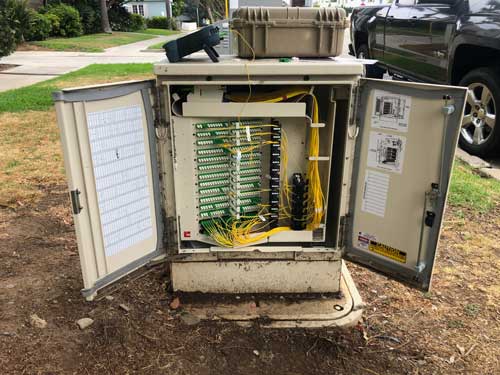
Just around the corner from our office is this FDH installed by Verizon for FiOS over ten years ago. It shows the rows of SC-APC connectors available for connections and the patchcords connecting current users. After all the terrible workmanship we've seen, it's is a pleasure to show this photo of a well-organized, neat FDH pedestal.
850nm LEDs Extinct?
Two equipment manufacturers told us this month that they could not get 850nm LEDs - leadtimes were long and prices very high. These LEDs are needed for multimode test equipment. In transmission equipment, 850nm VCSELs are good subsititues, but test equipment needs the more consistent, less coherent light from the LED.
Communications Systems Grounding Rules: NEC Article 800 provides specific requirements
In the March issue of Electrical Contractor magazine, Michael Johnston, the NECA Executive Director of Standards and Safety wrote an excellent article on grounding and bonding for communications systems.
"Communications systems and equipment installed in buildings must comply with the specific rules given in Chapter 8 of the NEC . Even though these systems typically operate at lower energy levels, improper grounding and bonding can result in severe consequences for equipment and property and present shock hazards. Article 770 and the Chapter 8 articles of the NEC provide unique and specific grounding and bonding requirements for communications system installations."
Anyone
installing low voltage systems needs to know about
grounding and bonding and Michael's article is an
excellent introduction to the topic.
Try The FOA's Online Loss Budget Calculator
FOA has written many articles about loss budgets, something everyone involved in fiber optics needs to know and needs to know how to calculate. We've created a online Loss Budget Calculator that does the work for you. Just input your cable plant data and it calculates the loss budget. It works on any device, especially smartphones and tablets for field use and even allows printing the results.
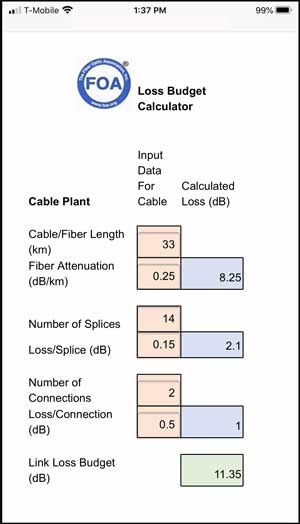
Bookmark this page (especially on your smartphone): FOA Loss Budget Calculator Online
Worth
Reading
Each month we read hundreds of newsletters and online articles. These are the ones we think you will find "worth reading."
Worth
Reading (And Watching): August 2021
US Broadband Coverage By Service Provider from the FCC
Six Community Broadband Networks Demonstrate Diversity of Approaches to Connectivity Challenges ILSR Community Networks.
Prysmian beefing up North American fiber cable production, Lightwave
New Hampshire Cooperative Expands FTTH Network ILSR Community Networks
Governor Parson Announces $400 Million Plan To Improve Broadband Infrastructure In Missouri
Governor Newsom (CA) Signs Historic Broadband Legislation to Help Bridge Digital Divide
Alaska Communications supplies undersea fiber for earthquake monitoring - Lightwave
Ciena's Submarine Cable Handbooks (4 to download)
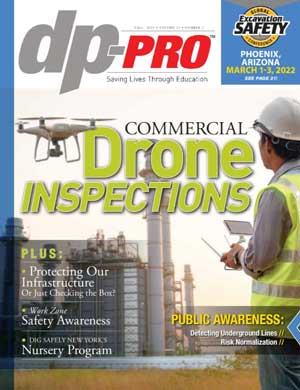
The Fall Issue of dP-PRO, the "call before you dig" magazine, is online.
Webinars (On Demand)
Tellabs' RDOF and the Tellabs FlexSym OLT-mini webcast plus download the slides
The OLT-mini is a low line count, small form factor and environmentally hardened OLT designed to keep deployment costs down, which makes it ideal for RDOF projects. (Tellabs mimiOLT was covered in the June FOA Newsletter about rural FTTH.)
The African Submarine Networking Seascape: A New and Emerging Market
TeleGeography/Ciena/MainOne
With this lightning-fast growth rate and eight new cables in the works, this is an emerging market with big network infrastructure projects to watch.
July
2021
Community
Networks notes that community-owned and operated
broadband networks have topped PCMag's annual "Fastest
ISPs in America" analysis for three years running,
poking holes in arguments that modern network infrastructure
is too complicated or costly for local communities to build
and operate successfully.Municipal Broadband Advocates Win Major Victory in Ohio as the lawmakers turn down an amendment to the state budget that would ban municipal broadband networks. Community Networks
Technical Standards For OSP Installations from the Communications and Information Technology Commission of Saudi Arabia. Very thorough, easily understood. Courtesy FOA instructor Tom Collins.
Scenes
From California’s Sugar Fire - The Atlantic.
Look at photo #7 and imagine your aerial cable under those
conditions.
Knoxville Utilities Board Set To Build Largest Municipal Fiber Network In The Nation The Knoxville City Council unanimously approved a proposal to build a fiber-to-the-home (FTTH) network. Network construction is expected to cost $702 million and take seven to 10 years to build out, reaching 210,000 households. Community Networks.
Muni Broadband Wave Washes Across Massachusetts Muni Broadband Wave Washes Across Massachusetts. Community Networks.
Worth Reading: June 2021
Lightwave Magazine is back after many years as only a online newsletter.
To Fill Millions of Open Jobs, Many Workers Need More Than Skills (NYTimes) Helping people land good jobs with career paths takes more than skills training, labor experts say. Coaching, mentoring and other assistance are also needed.Traditional Federal Money Drying Up For Rural Broadband “We’re taxing the telephone networks to pay for the broadband network,” said Brendan Carr, a Republican member of the Federal Communications Commission. “That’s like taxing horseshoes to pay for highways.” Read more from Bloomberg.
Worth
Reading: May 2021
China starts large-scale testing of its internet of the future
China launched a large-scale experimental network in Beijing on Tuesday to test the future of internet technology over the next five to 10 years.Headquartered at Tsinghua University, the “future internet technology infrastructure” connects 40 of the…
Read in Apple News from South China Morning Post: https://apple.news/A64XeyG2gRuGB1E63LAeqjw
Ransomware attack leads to shutdown of major U.S. pipeline system Washington Post. The attack on top U.S. operator Colonial Pipeline appears to have been carried out by an Eastern European-based criminal gang. Are you sure you want that critical system connected to the Internet?
NeoPhotonics Announces Cumulative Shipments of 2 Million Ultra-Narrow Linewidth Lasers for Coherent Transmission Systems That's a lot of coherent systems!
The federal government is rolling out record amounts of broadband funding. It could be just the beginning. The federal government is starting to disburse more than $10 billion to bring more Americans affordable Internet. Washington Post
Communications Systems Grounding Rules: Article 800 provides specific requirements by Michael Johnston, NECA Executive Director of Standards and Safetyin EC Magazine
Statistics on US Labor In Telecom
Eric Pearson sent us some links to US Bureau of Labor Statistics data on the US Workforce. Granted it was updated in May 2019, but has lots of useful and interesting information on where the work is and what workers are paid.
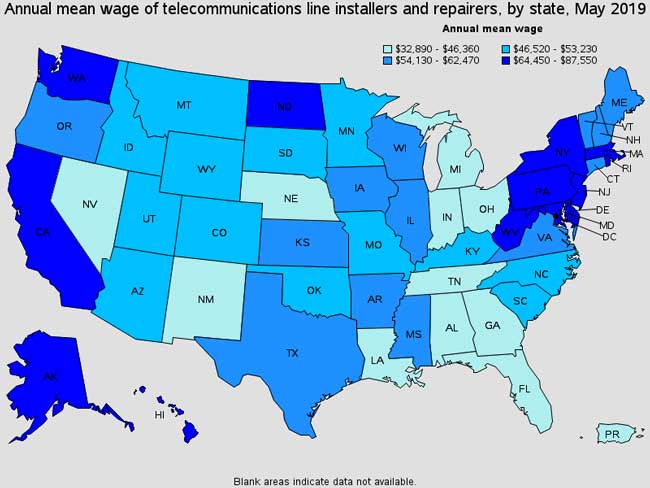
Read the reports here:
Telecommunications Line Installers and Repairers (Install and repair telecommunications cable, including fiber optics.
Telecommunications Equipment Installers and Repairers (Install, set up, rearrange, or remove switching, distribution, routing, and dialing equipment used in central offices or headends. Service or repair telephone, cable television, Internet, and other communications equipment on customers’ property. May install communications equipment or communications wiring in buildings.
1995-2020 - FOA's 25th Anniversary!
As part of celebrating 25 years of serving the fiber optic industry as its primary source of technical information and independent certifying body, FOA thought it appropriate to create a short history of the organization and how it has developed to help the fiber optic industry. We also wanted to recognize the contributions many people have made to the organization over the years that made FOA what it is today.The FOA history is now archived on the FOA website where you can read it anytime or link to it. Updated info - dB, total internal reflection and science projects,
Worth Reading - News Summary - Past Links Worth Repeating
Recycling Fiber Optic Cable - Contact:Steve Maginnis
LD4Recycle/ CommuniCom Recycling
(Visit website)
sm@LD4Recycle.com
803.371.5436
Communications Systems Grounding Rules: NEC Article 800 provides specific requirements - Electrical Contractor Magazine
Sumitomo's Ribbon Splicing Guide - download from one of the leaders in splicing.
"Who Lost Lucent?: The Decline of America's Telecom Equipment Industry"
This is a MUST READ for managers in telecom or any industry!
This long and well-researched and annotated article in American Affairs Journal should be mandatory reading for every high level manager in a telecom company - or any other company for that matter. To summarize the article, today, America has no major telecom equipment company and fears the major suppliers of equipment who are all foreign, especially the Huawei from China. This article explains how America got into this deplorable state.
OFS also has an excellent website and blog of tech articles worth browsing.
IEC 60050 - International Electrotechnical Vocabulary - An extensive dictionary for fiber optics in English and French. Highly technical - this is one definition: "mode - one solution of Maxwell's equations, representing an electromagnetic field in a certain space domain and belonging to a family of independent solutions defined by specified boundary conditions"
If you are interested in restoration - aren't we all? - you should also read this article in dpPro magazine by FOA President Jim Hayes: Damage Protection Requies Looking Overheas As Well As Underground - dpPRO Magazine - about the problems with aerial cables. His previous article for the magazine was New Techniques for Fiber Optic Installation.
How
much fiber optic cable is manufactured each year?
CRU Reports - unsurprisingly China is by far the largest
market today
The
Institute
for Local Self-Reliance weekly newsletter has
lots of interesting articles and links.
The Open Technology Institute at New America just
published “The
Cost of Connectivity 2020,”
US
Ignite and Altman Solon issued “Broadband
Models for Unserved and Underserved Communities”
Universal
access to broadband is a cornerstone to a strong
economy, Achieving universal access will require
community partnerships. by Alfreda
B. Norman, Sr. VP, Federal Reserve Bank of Dallas
FIBER
TO THE FARM: The co-ops that electrified
Depression-era farms are now building rural internet. Be
sure to check out the high-tech equine installation
equipment.
Next
Century Cities Newsletter - News from cities
around the US including Detroit and New York plus small
Infrastructure Get Some Respect, NY TImes "On Tech" "The magic of the internet requires a lot of very boring stuff behind the scenes. "
DIRT Report On Damage To Utilities Common Ground Alliance (CGA) annual DIRT report provides a summary and analysis of the events submitted into CGA’s Damage Information Reporting Tool (DIRT) for the year 2018. The complete report is available for download here. In addition, there is an interactive dashboard that allows users to filter the data more by factors contributing to damages.Structured Cabling News - a website and weekly newsletter about cabling.
The Internet Master Plan for New York City. The New York City Internet Master Plan is a comprehensive framework for the infrastructure and services that provide connectivity to New York City residents and businesses. This Master Plan will guide City actions and public-private partnerships to transform New Yorkers’ access to this essential infrastructure for generations to come.
Fiber Trivia From Corning.
The Future Of Work Is Skills - So Stop Worrying About Degrees - The reality is the future of work is about skills, not just degrees. (FOA Newsletter Feb 2020)
The
job market is hot. So why are half of U.S. grads
missing out?
VIAVI Books On Fiber Optic Testing (2 volumes) - They're back!
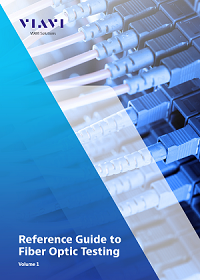
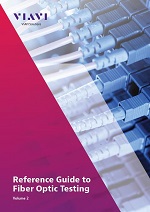
Besides the FOA reference materials, two JDSU/VIAVI textbooks, Reference Guide to Fiber Optic Testing, Volumes 1 and 2, were used as references for some of the FOA courses and are recommended for instructors and students. The books are available from VIAVI as eBooks and the everyone should download them and recommend them to others.Download yours now. Volume 1. Volume 2. Viavi Books
Guidebook To MPO Testing OptoTest offers this complete guide to MTP®/MPO testing. In this guide, you will learn all there is to know about the different test methods, equipment options, troubleshooting, and best maintenance practices to ensure that you have the best testing experience. Go here to download the book.
50th Anniversary of The Development of Low Loss Fibers A history of the development of low loss fiber, a fascinating story by Jeff Hecht on the OSA (Optical Society of America) website.
How OFS Makes Fiber
Interesting YouTube video on how fiber is made. Perhaps a little too much "show biz" but fascinating. If you have ever seen fiber manufacture, look at this video. You will be amazed at how big preforms have become!
How Nexans Makes Copper Cables - compare the process to fiber - don't most of the machines look similar?
The True Cost of Telco Damages (what backhoe fade or target practice can cost)
Rural Electric Cooperatives: Pole Attachment Policies and Issues, June 2019.
Clearfield-FOA Certification Training Clearfield is now offering their customers an FOA CERTIFICATION course. This course provides a basic understanding of fiber optic technology, as well as Clearfield product knowledge and how Clearfield’s integrated product systems work together in a fiber network.
Substandard Contractors - Fiber Optic Knowledge Doesn't Always Trickle Down (EC Mag)
Another Source Of Articles On Fiber
FOA President and editor of this newsletter Jim Hayes has also been writing a column in Electrical Contractor Magazine for almost 20 years now. Electrical contractors do lots of fiber work and this column has covered some topics they are interested in including installation processes, network design, fiber applications and a lengthy series on dark fiber - what it is, how's its used and how it benefits the growth of communication. A recent web site redesign makes it easier to browse all these articles - just go to http://www.ecmag.com/contributing-authors/jim-hayes and you can see all of them.
Q&A
Tech Questions/Comments From FOA Newsletter Readers Worth Repeating
The FOA Fiber FAQs Page (FAQs = frequently asked questions) gathers up questions readers have asked us (which first ran in this newsletter) and adds tech topics of general interest.
Good
Question!
The FOA Fiber FAQs Page (FAQ s = frequently asked questions) gathers up questions readers have asked us and adds tech topics of general interest.
Questions From FOA Newsletter ReadersAugust 2021
Height Of Aerial Fiber Optic Cables
Q: Is there a code standard for how high from the ground a for a fiber optic cable running through a residential yard? if yes, please provide the standard or point me to the standard.
A: If we go by NEC 2020, the height is 8 feet,above roofs. with this qualifier. No driveways just over grass. Art /section 770.44 B. Also 800.44 A 4 states 12 inches between electric service and Fiber optic cable. But service has to be 12 feet at house so I would say 11 feet above grass. If driveway is there, Residential 15 feet for service, electrical, so fiber at 14 feet.
Identifying Users On A PON Network
Q: How or what testing tool or technique can I use to verify whether there is a live customer w/ONT working on any fiber i may select @ a splice enclosure prior to getting further down the cable and to the MST service terminal. All our fibers have light on them leaving the CO so when we go into a splice enclosure to pick a fiber to connect a drop to, to service a home, they are usually all lit up in that enclosure.
A: The simple answer for a tool or technique that can tell you if a customer is connected on an output of a PON splitter is “documentation.” If you know where each fiber is connected going downstream. Then the IT person who programs users into the system can tell you if that fiber is connected to a customer. There is a possibility that there is a test solution. Have you ever heard of a “fiber identifier”? It’s a gadget that can tell if there is signal in a fiber and some can identify the direction it comes from. What I don’t know if the unit can somehow indicate bi-directional traffic. Nobody we contacted seems to know either.
June 2021
Using FOA Resources To Learn
Q: I've been working in this industry since October 2018. Started as a Field Service Engineer fielding aerial and underground. I have since become a Project Engineer working with aerial OSP and ISP. What is the catch? This is just an amazing platform to continue with for me. It's been all about the OJT, but this is just a great resource for me now and the YouTube videos allow me to watch your videos from today as well as 10 plus years ago.
How can I use the website to benefit me? Where should I start? I just want to watch every YouTube video before I focus on your website, but maybe I want to do both, Suggestions?
A: FOA has three options to get information:
FOA Guide is the FOA knowledgebase, ~1000 pages of technical material generated by the FOA technical advisors around the world. The link is to the Table of Contents where you can find pages on just about any topic in fiber optics from fiber to coherent communications. Every year about 1/2 million users download about 4 million pages!
Linked from the Guide above is the FOA YouTube channel which you have found. It’s over 100 videos, about 60 lectures on tech topics, where you can get very familiar with my voice - I’m the lecturer. The FOA videos are listed here: https://foa.org/tech/ref/contents.html#YT
You can also go to the FOA channel on YouTube: go to the FOA Channel “thefoainc"
Fiber U is our free online learning site. We started online learning at Fiber U in 1997. Today it has over two dozen free online self-study courses that lead to a Fiber U Certificate of Completion. Courses include Basics of Fiber Optics with an accompanying Basic Skills Lab, where many people start, especially if they are aiming at FOA CFOT certification, the primary certification from FOA.
We also have basic courses on premises cabling, OSP construction and installation, splicing, termination, testing, network design and about a dozen that cover specific applications. The FTTH course was developed when Verizon approached FOA in 2005/6 to help with the rollout of FiOS - training and recruiting installers.
FOA”s problem is we have too much “stuff”! It’s so much it can be confusing on where to start. We generally recommend going to Fiber U and picking courses that are important to your work. Those courses will lead you to the appropriate pages in the FOA Guide and videos on YouTube.
But we are always here to help. Tell us what you are interested in and we can point you to the right places (often including websites of manufacturers of products who also have immense amounts of applications information.)
We’re now working on a “Roadmap” to help people find their way, but that will take time, there are a lot of paths to connect!
Slow Internet After Conversion From DSL To FIber
Q: Could you please help me understand why I am getting a slow connection (the same as when I was using anADSL box and sometimes even a bit slower) while having a fiber optic connection to my home (FTTH then RJ45 between wall & iMac)?
I am using an old iMac from early 2009 but the cable needed is a regular RJ45, so I do not see why it should not take the high speed connection...
As a matter of fact, it still takes several seconds (3 to 6 or even 12) for some pages to load...
A:There are several possible reasons your Internet is slow loading pages.
The fiber optic link to your residence may have little or nothing to do with the speed you see. If you use a speed test to check the speed of the connection, it’s probably going to show faster speeds, but it generally only tests the connection to your ISP - Internet Service Provider - not to the Internet or a remote data center. The actual connection to the data center sending you the pages you request may be hundreds or thousands of km long and through many switches, so that could affect the speeds.
The major problem we see is the speed of the connection of your ISP to the Internet. If they have many subscribers, the “traffic jam” is at their connection. This is generally easy to see over the time of day. In the evening when many people are streaming TV or movies, it sends to get much slower, just like automobile traffic during rush hour. At times when fewer people are online, speeds will be faster.
We have exactly the same problem here in Santa Monica. Our Internet over a cable modem tests at 100-200 Mb/s but pages are slow loading because so many people are on the network at once.
However, I also suspect your 12 year old iMac. The typical web page is more complex than a decade ago and may contain hundreds of files including graphics that have to be downloaded and assembled for you to see the page.Newer computers are much faster and software is more efficient at handling large pages.
Seal End Of Cable
Q: For aerial OSP cable, are there any problems with leaving the end of the cable open or should it always be put into a closure of some kind?
A: The open end of the cable allows moisture to get into the cable and can be a problem.
I see several scenarios here. If the cable is installed and waiting for splicing, it could be a matter of time. If the work is to be done soon - a week or two - leaving it open is OK, but if the time is longer or you prefer being careful, just seal the end of the cable by wrapping it with plastic electrical tape. The end will be opened up for splicing; about 2m of cable needs to be stripped to splice it, so a few days exposure is OK, but long term we’d recommend a simple tape seal, the way manufacturers do when shipping cable on a reel.

The word on the "Dig Once" program is getting out - FOA is getting calls from cities asking us for information and advice. Here are some links:
The DoT page on the administration’s Executive Order: http://www.fhwa.dot.gov/policy/otps/exeorder.cfm
From the Council of State governments: http://www.csg.org/pubs/capitolideas/enews/cs41_1.aspx
From the city of San Francisco: http://sfgov.org/dt/dig-once
An article about Dakota County, MN: https://muninetworks.org/tags/tags/dig-once
And the one to download and hand out:
A “How To” Guide from The Global Connect Initiative: https://share.america.gov/wp-content/uploads/2016/04/6.-GCI-Dig-Once.pdf
Is There A Standard For Fiber Optic Installation?
Another question we get often is "Is there a standard for fiber optic installation." The answer is yes, but not from the usual standards groups you might expect. Over 20 years ago, the National Electrical Contractors Association (NECA) asked FOA to help create a standard for installation. That standard, ANSI/NECA/FOA-301 has been updated three times already and is about ready for another update.
Unlike most of those groups who charge you a fortune for standards, FOA covers the cost so ANSI/NECA/FOA-301 is available free from FOA.
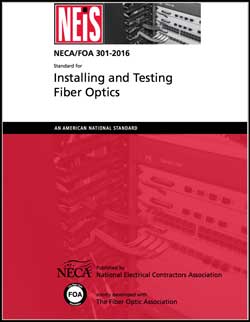
Download your free copy of ANSI/NECA/FOA-301 here (PDF)
Older questions are now available here.
Training / FiberU
News and resources to help you learn more and stay updated.
Find a listing of all the FOA-Approved schools here.

Free online self-study programs on many fiber optics and cabling topics are available at Fiber U, FOA's online web-based training website.
Free online training at Fiber U
The FOA has >100 videos on

Welcome New FOA Approved Schools
School 388: Global Com of Sterling, Virginia, USASchool 389. CWA-JATC Telecom Training Center, San Jose, CA
School 390 Northern Allied Communications, Nespelem, WA
School 391 Lewis-Clark State College, Lewiston, ID
School 392 Wallace Community College, Dothan, AL
For information on these new FOA-Approved Schools and a listing of all the other schools, go here.
FTTH
Updates In The FOA Guide And YouTube
FTTH has always been the most popular application for FOA's knowledge base. The subject is a major topic in the FOA Guide and the Fiber U FTTH course has been very popular. Many of our FOA approved schools use the FOA curriculum and teach combination courses for CFOT/CFOS/H for techs and CFOS/D (design) and CFOS/H for designers.
As with all topics in the FOA knowledgebase, we try to keep up to date, incorporating the latest developments and trends to ensure our materials are most useful to the industry. Over the last few months, we've been working overtime to update FOA materials covering FTTH. Along the way, we've found out about some new products and applications that are important for network owners and managers, designers, installers and operators to be familiar with, as they can help build FTTH networks that are better, cheaper and easier to design, build and operate.
Technical topics we've updated and expanded include 10G PONs and FTTx architectures for urban, suburban and rural networks. In doing so, we uncovered a new product that can make rural FTTH much more feasible and cost effective - a small OLT for remote locations (see article below). We've examined some architectures being used in the real world that are different but work better in some particular geographic locations - e.g. putting all the splitters in the CO/head end and running a fiber to every subscriber. We'll expand on those topics later in the Technical section of this newsletter.
Here's what we've created and updated recently:
FOA Guide: Added a section on FTTH Network Design, updated sections on Architecture and PONs (including 10G)
FOA's YouTube Channel: Added 4 new FTTH videos on Network Architecture, PONs, Network Design and Installation/Test.
How Can These New Materials Benefit You?
- Update your knowledge: Even if you already have your CFOS/H or have completed the FTTx self-study course on Fiber U, we recommend you go back to the Fiber U course on FTTH Network Design and take the architecture, PON and Design lesson again.
- Getting Started in FTTH: We recommend buying a copy of FOA's FTTH Handbook or going straight to the Fiber U FTTx self-study course which will get you started right most quickly.
- Learning
More About Special Topics in FTTH: Read
the new/updated pages on the FOA Guide and watch the
new videos.
- Designing FTTH Networks: If you are involved in the design of FTTH networks but new to fiber optics, start with the Fiber U Fiber Optic Network Design course then take the Fiber U FTTx self-study course.
- Teaching
FTTH Courses: If you are already an FOA-approved
school, download the new updated curriculum. Not an FOA
School? Contact FOA.
- Employee
OJT
What's Next?
Our next project is to use these new/updated training materials to help train more techs.
- Training at FOA approved schools: We will of course work through the FOA network of approved schools, many of which already teach FTTH courses.
- OJT (On the job training): We will also be reaching out to network owners and managers and their contractors who can use all these free materials for OJT - on the job training - for their workers.
Fiber
U MiniCourses
Got An Hour Or Less? Learn Something New About Fiber Optics.
FOA has introduced a new type of Fiber U course, the MiniCourse, a free online course you could take in a short time, perhaps as you ate lunch at your desk or took a coffee break. The topics of these courses should explain what they are about, and these are all very important topics to fiber optic techs.
Fiber Optics In Communications
How Optical Fiber Works
Fiber Optic Network Restoration
Fiber Optic Connector Identification
Fiber U Color Codes
The Mysterious dB of Fiber Optics
Fiber Optic Cable Bend Radius
Fiber Optic Link Loss And Power Budgets
Fiber Optic Connector Inspection And Cleaning
Fiber Optic Media Conversion
Fiber Optic Cable Midspan Access
Reading An OTDR Trace
The courses have two components, video lectures and readings, that are complementary. As usual there is a self-test to allow you to check your comprehension. As with other Fiber U courses if you desire, you can take a short test for a Fiber U Certificate of Completion that costs only $10.
All these free courses and many more are available at Fiber U.
What
Fiber Techs Don't Know -
What We Learn From FOA Certification Tests
As FOA moves more testing over to our digital online testing system at ClassMarker, we have access to more data about our testing, including what questions and topics on the tests are answered incorrectly most often. Having this data gives us an opportunity to evaluate the questions and how they are stated, but more importantly it allow us to help our instructors teach the subjects and us to change our curriculum and online courses to emphasize these particular topics. These are some of the topics that we have noticed are answered incorrectly more often in FOA and Fiber U tests.
Most of the questions missed are on testing.
1. OTDRs - particularly what information is in the OTDR trace.
2. The difference between dB and dBm
3. Loss budgets - both the concepts and doing the math
4. Insertion loss testing - single-ended or double ended for testing patchcords or cable plants, how to set 0dB references
5. Units of measure - fiber is measured in microns, wavelengths in nanometers, etc.
At FOA, we're working to add Fiber U MiniCourses on these topics and working with our schools to emphasize these topics in their classes.
If you are going to be taking a FOA certification course or test in the near future, these topics should be on your final exam study list.
What We Learn From Hands On Labs
We learn about students performance in hands-on labs from the feedback of our instructors and our own experiences too. One big problem is the use of hand tools. Growing up today, you learn how to use keyboards, mouses and touch screens, but decades ago, you also learned how to use basic hand tools. This is big enough of a problem that we're considering adding some video lessons on basic hand tools to prepare students for cable prep, termination and splicing that require the use of hand tools.
FOA
"Work-To-Cert" Program
Experience Plus Online Study At Fiber U = FOA Certification
This year, more techs have become comfortable with online conferences, webinars and training. Many have discovered that they can become FOA Certified using their experience in fiber optics and study for the FOA certification exams online at Fiber U. Thousands of industry professionals have applied to the FOA directly for certification without the need for classroom training, based on their knowledge and skills developed working the field. Since FOA certifications are based on KSAs (knowledge, skills and abilities), current techs already show the skills and abilities required through their field experience. FOA provides free online self-study courses at Fiber U for the knowledge part to prepare you for FOA certification exams which you can also take online.
If you are an experienced field tech interested in certification, and FOA is the internationally recognized certifying body for fiber optics, you can find out more about the FOA "Work to Cert" program here.
If you are already a CFOT, FOA also offers many specialist certifications you can obtain based on your experience as a field tech. See what's available at Fiber U.
FOA
Guide "Basics Of Fiber Optics" Now Available Online in
Portuguese (6/2020)
FOA has
now translated the Basics of Fiber Optics textbook in our
Online Guide into Portuguese, joining Spanish and French
translations. For those speaking Portuguese, we have the
technical information and for schools we also have
curriculum available. Here is the FOA Guide in Portuguese, Spanish and French translations.
Time
To Learn - Online
Some
schools have been closed during the pandemic, so FOA has
been working with them to create new online learning
experiences that can in some cases lead to certification
online. FOA certifications are still based on the KSAs -
knowledge from the classroom, skills from the labs and
abilities judged by instructors or proven by actual
experience. ZOOMing
Much of what we're doing benefits from the capabilities of "Zoom." Others have created videoconferencing apps, but none work so well, especially with limited bandwidth. We've seen remote labs that have an instructor showing students how to use the tools they were sent then watching them duplicate their actions. We have worked out methods to use Zoom to proctor FOA's online certification exams.
Blended Learning
While most FOA schools have suspended in-person training during this period, some are offering a "blended learning" option. That means that students sign up for a FOA certification course, take the classroom sessions on Fiber U with the assistance of a FOA certified instructor. Now online instruction can include reviewing the labs using the Fiber U Basic Skills Labs, then when it's possible to attend classes at the school, complete the hands-on labs and take the FOA certification exam.
Offline Fiber U
FOA has also created offline Fiber U modules to allow students with poor or limited Internet access to use the Fiber U Basic Fiber Optics and Premises Cabling programs without Internet access. Contact FOA for information on using this option.
Online Remote Labs
Alternatively, some schools are experimenting with "remote labs," where the students get sent tool kits and components and labs are conducted by videoconferencing. Before the labs, the students may watch demos by their instructor on videoconferencing and/or review the relevant "virtual hands-on" lessons in the Fiber U Fiber Optics Basic Skills Labs so they will already know the steps in the exercises. And Fiber U has the new Fiber U DIY Basic Skills Lab lesson with directions on how to purchase inexpensive tools online and use them to learn basic fiber optic skills. Videoconferencing allows the instructor to remotely monitor their work and provide help as needed. Contact the FOA for more information.
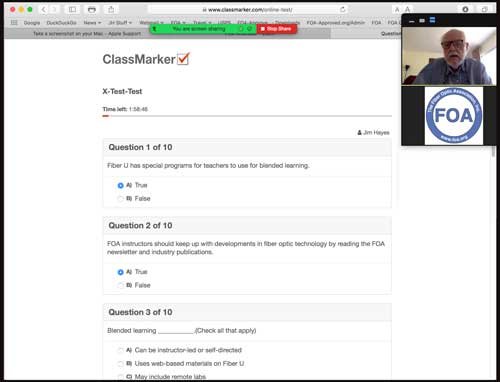
FOA Zoom Exam Proctoring
Online Certification Testing
FOA has all its certification tests available online, both for use by our schools and by our direct "Work to Cert" applicants. All FOA certification tests require a proctor to oversee the applicant taking the exam. In this time of social distancing, getting a proctor can be difficult, so FOA now has procedures for online proctors administering the exam. Contact the FOA for more information.
OJT - On-The-Job-Training
Many novices get a job and learn on the job. They usually have an experienced tech who helps them gain the knowledge and learn the skills they need to perform their job. Thinking about this in relation to the FOA KSAs, the knowledge, skills and abilities needed by a fiber optic tech, the tech will learn skills but not the basic knowledge that helps them understand the processes involved. FOA can offer help here with our FOA's OJT-to-Cert Program, using our Fiber U online self-study programs. While the tech learns on the job, they become a Fiber U trainee, getting the knowledge they need, while working under their "mentor" at work. This is particularly good for contracting companies who need techs but do not have the usual training courses available. Interested in OJT programs? Click on the link below or contact FOA for more information.
FOA's OJT-to-Cert Program

FOA offers free online self-study programs at Fiber U. Many users are preparing for FOA certification programs - taking courses at our schools or using the "Work-to-Cert" program. Some of our schools are requiring Fiber U programs as prerequisites for their classroom courses so they can spend more time on hands-on activities.
FOA School Offers Toolkit With Online Training
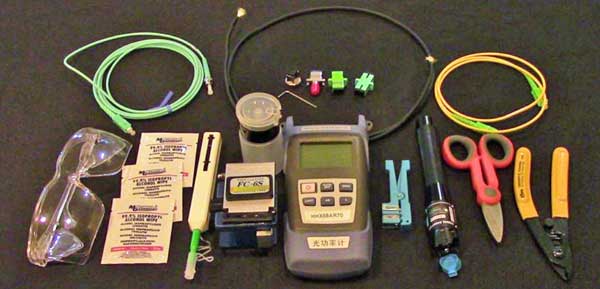
Slayton Solutions (FOA Approved School #156) is offering a simple fiber optic tool kit that includes a 29-piece set of fiber optic tools and a power meter along with training videos and online instruction for only $499. 29 Piece Kit includes all tools and devices a technician needs to install fiber optic connectors and test optical power. Information on the kit is available on YouTube. You can contact them for more information at slaytonsolutions@sbcglobal.net or https://www.fiberopticsinstitute.com
Publications / Resources
More
New FOA Video Lectures On YouTube
Did
you know YouTube will close caption videos in many
languages? Here are directions.
Lecture 67 Fiber Optics At Electrical Utilities
This new FOA video covers the applications of fiber optics at electrical utilities, looks at the various ways they mix communications on fiber with power transmission and distribution, and talks about the role of electrical utilities in delivering broadband, especially to rural areas.
FOA YouTube Video Describes On-The-Job Training (OJT)
Lecture 62: On The Job Training For Fiber Optics Using Fiber U
To explain How OJT works and FOA's OJT-To-Cert program, FOA created a short 10 minute YouTube video that explains what OJT is, who uses it and how to use Fiber U to organize and enhance OJT for new employees and experienced workers too.
More New Videos Including FTTH Series
As part of developing the new Fiber U MiniCourses, we added several new YouTube videos:
Lecture 56 explains the issues of cable bend radius limitations, typical cable specifications and how to gage the proper radius or diameter when installing or storing cable. Lecture 57 covers problems with dirty connectors and how to inspect and clean them.
4 New Lectures on FTTH - #63-66
New Lecture on Fiber Optics at Electrical Utilities - #67
FOA Lecture 51 Fiber Optic Restoration Part 1 - Causes of Damage To The Network
FOA Lecture 52 Fiber Optic Restoration Part 2 - Planning For Restoration
FOA Lecture 53 Fiber Optic Restoration Part 3 - Troubleshooting And Repair
FOA Lecture 54 Fiber Optic Connector Identification - New and old
FOA Lecture 55 The Mysterious dB of Fiber Optics. - Understanding dB
FOA Lecture 56 Fiber Optic Cable - Bend Radius - Important for Installers to Understand
Like all our YouTube lectures, they are all short and easy to understand.
Did you know YouTube will close caption videos in many languages?
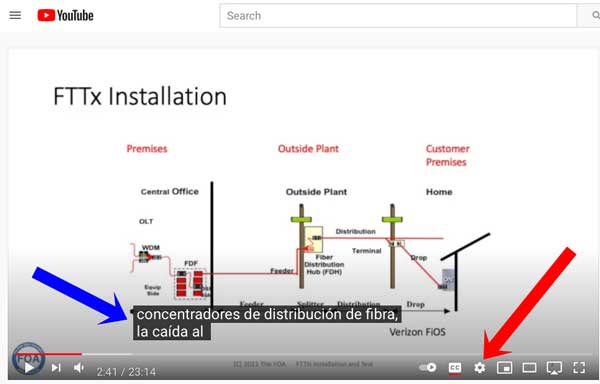
Sign in with Google to get translations for closed captioning. Click on the settings icon (red arrow.) Choose "Subtitles". English is the default language. Click on the arrow after "English (auto-generated) >". In the new window click on "Auto-translate" and choose the language you want.
FOA
Loss Budget Calculator On A Web Page 5/2020
FOA has written many articles about loss budgets, something everyone involved in fiber optics needs to know and needs to know how to calculate. We recently discovered how to get a spreadsheet ported to a Web page, so we created this web page that calculates loss budgets. We have an iOS loss budget app, but with this web page, you can calculate loss budgets from any device, smart phone, tablet, laptop, or desktop computer that has web browsing capability.

Bookmark this page (especially on your smartphone): FOA Loss Budget Calculator Online
 We are
continually updating the Online Reference Guide to keep up
with changes in the industry and adding lots of new pages of
technical information. When you go to the FOA
Guide Table of Contents to see the latest updates -
look for
We are
continually updating the Online Reference Guide to keep up
with changes in the industry and adding lots of new pages of
technical information. When you go to the FOA
Guide Table of Contents to see the latest updates -
look for  .
.Recent updates:
FTTH Updates: Added a section on FTTH Network Design, updated Architecture and PONs (10G)
Color Codes For Fiber Optics
Fiber Optic Projects - the FOA Guide to projects from concept to operation
Coherent Communications Systems in the FOA Guide.
Go to The FOA Online Fiber Optic Reference Guide.
FOA Reference Books
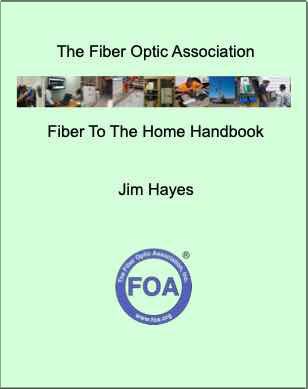
NEW: FOA's FTTH Handbook: We've gathered all our information on FTTH from the FOA Guide and past issues of the FOA Newsletter and edited it into a 112 page "FTTH Handbook." We even added a section on planning and managing FTTH Projects.
The Fiber Optic Association Fiber To The Home Handbook is available from Amazon in print and Kindle editions.


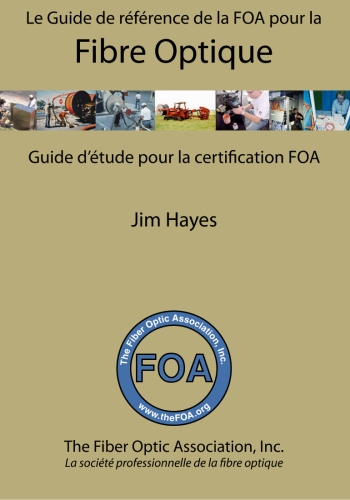





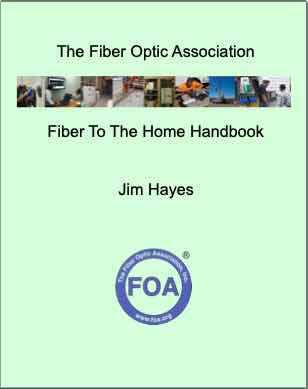
Fiber Optics (4 languages), Premises Cabling, OSP fiber and construction, Network Design, Testing and FTTH
-
The
FOA has it's own reference books for everyone working in
fiber optics - contractors, installers and end users as
well as for use as textbooks in classes at educational
institutions. They are available as printed books or
Kindle at much lower prices than most textbooks since we
self-publish and sell online, cutting out the middlemen.
Click on the book images for more information. The
Reference Guide To Fiber Optics is also available in
Spanish and French (print and online) and Portuguese
(online only.)
Click on any book for more information about it.
FOA has reprinted

"Lennie Lightwave's Guide" on its 25th anniversary in a special print edition.
Lennie and Uncle Ted's Guides are online or as free iBooks on iTunes.


Click on any of the books to learn more.
- Fiber Optic Safety Poster to download and print
Resources For Teachers In K-12 And Technical Schools
Teachers in all grades can introduce their students to fiber optic technology with some simple demonstrations. FOA has created a page for STEM or STEAM (science, technology, engineering, arts and math) teachers with materials appropriate to their classes. Fiber Optic Resources For Teachers.
Safety
On Safety
FOA considers safety an integral part of all our programs, curriculum materials and technical materials. We start all our textbooks and their online versions with a section on safety in the first chapter, like this: Before we get started - Safety First!There are pages on the FOA Guide on Safety procedures Including Eye Safety and. Digging Safely
And a YouTube lecture: FOA Lecture 2: Safety When Working With Fiber Optics
In our OSP Construction Section, these pages cover many safety issues including those related to the construction of the cable plant: Project Preparation And Guidelines, Underground Cable Construction, Underground Cable Installation and Aerial Cable Installation.
There is even a safety poster for the fiber activities: PDF Safety Rules For Fiber Optics
The FOA is concerned about safety!
There is a toll-free "call before you dig" number in the USA: Dial 811
See www.call811.com for more information
The
Common Ground Alliance has an excellent "Best
Practices Guide" online
- The US Department of Transportation has a website called "National Pipeline Mapping System" that allows one to search for buried pipelines.
Why We Warn You To Be Careful About Fiber Shards
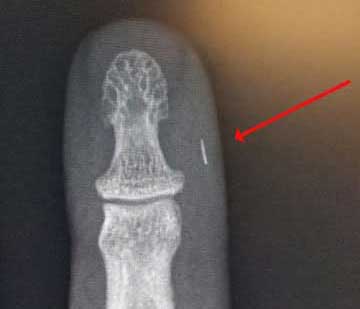
Photo courtesy Brian Brandstetter, Mississauga Training Consultantcy
Safety Leader Magazine
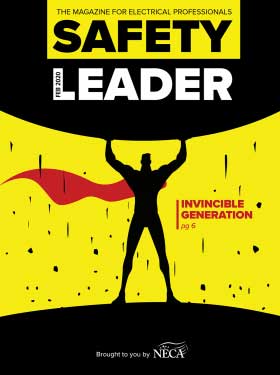
Safety Leader, a new quarterly magazine, informs and educates electrical contractors on safety from various angles—electrical, workplace, PPE, regulations, leadership, line work, NFPA 70E, and more. Safety Leader is bundled with ELECTRICAL CONTRACTOR in February, May, August and November. To receive Safety Leader subscribe to ELECTRICAL CONTRACTOR magazine here or subscribe to the ELECTRICAL CONTRACTOR newsletter here.
2022 Conference On Damage Prevention In Phoenix

Global
Excavation Safety Conference
Phoenix
AZ
March
1-3, 2022
GlobalExcavationSafetyConference.com:

The magazine, dp-Pro, sponsor of the conference, has also published it's latest issue with an article by FOA on "New Construction Techniques in Fiber Optics" and a overview of the FOA. You can read the magazine here.
Best Practices Guide For Underground Construction
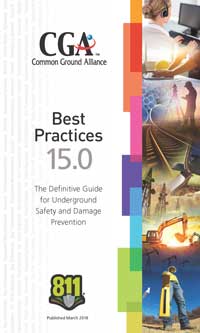
We assume you are familiar with the "One Call" and "Call Before You Dig" (811) program, but are you also familiar "Click Before You Dig.com" and with the people behind it - the Common Ground Alliance and their Best Practices website?
Officially formed in 2000, the CGA represents a continuation of the damage prevention efforts embodied by the Common Ground Study. Sponsored by the U.S. Department of Transportation and completed in 1999, this Study represents the collaborative work of 160 industry professionals who identified best practices relating to damage prevention. Any best practice or program endorsed by the CGA comes with consensus support from experts representing the following stakeholder groups: Excavators, Locators, Road Builders, Electric, Telecommunications, Oil, Gas Distribution, Gas Transmission, Railroad, One Call, Public Works, Equipment Manufacturing, State Regulators, Insurance, Emergency Services and Engineering/Design.
Read the CGA Best Practices Guide here.
Here are all the CGA resources for damage prevention.
The US Department of Transportation has a website called "National Pipeline Mapping System" that allows one to search for buried pipelines.
FOA/About
About The FOA
- Contact
Us: http://www.foa.org
or email <info@foa.org>
FOA has a company page and four LinkedIn Groups
FOA - official company page on LinkedIn
FOA - covers FOA, technology and jobs in the fiber optic marketplace
FOA Fiber Optic Training - open to all, covers fiber optic technology and training topics
Grupo de La Asociación de Fibra Óptica FOA (Español)
What is The FOA?
The FOA is a, international non-profit educational association chartered to promote professionalism in fiber optics through education, certification and standards.
Founded in 1995 by a dozen prominent fiber optics trainers and leaders from education, industry and government as a professional society for fiber optics and a source of independent certification, the FOA has grown to now being involved in numerous activities to educate the world about fiber optics and certify the workers who design, build and operate the world's fiber optic networks.
Read More
FOA
was 25 years old July 2020 - Read about FOA's history
Learn More About FOA's History.
Contact Us
The Fiber Optic Association Inc.
http://www.foa.org or email <info@foa.org>
The FOA Home Page

Want to know more about fiber optics? Study for FOA certifications? Free Self-Study Programs are on "Fiber U®." Looking for specific information? Here's the largest technical reference on the web: The FOA Online Fiber Optic Reference Guide.

Free online self-study programs on many fiber optics and cabling topics are available at Fiber U, FOA's online web-based training website.
-
Contact Us
The Fiber Optic Association Inc.
http://www.foa.org or email <info@foa.org> - Phone:
1-760-451-3655
(C)1999-2020, The Fiber Optic Association, Inc.
FOA Logo Merchandise
-
New
FOA Swag! Shirts, Caps, Stickers, Cups, etc.
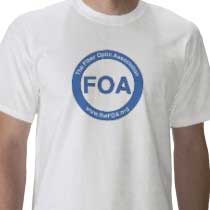
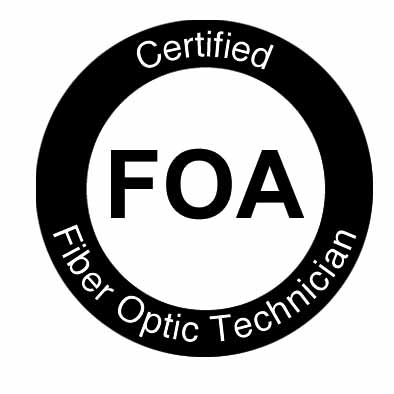
Your Name, CFOT® - It pays to advertise!
The FOA encourages CFOTs to use the logo on their business cards, letterhead, truck or van, etc. and provides logo files for that purpose. But we are also asked about how to use the CFOT or CFOS certifications. Easy, you can refer to yourself as "Your Name, CFOT" or "Your Name, CFOS/T" for example.
Feel free to use the logo and designations to promote your achievements and professionalism!
Contact FOA at info@thefoa.org to get logos in file format for your use.Privacy
Policy (for the EU
GDPR): The FOA does not use cookies or any other
web tricks to gather information on visitors to our
website, nor do we allow commercial advertising. Our
website hosts may gather traffic statistics for the
visitors to our website and our online testing service,
ClassMarker, maintains statistics of test results. We do
not release or misuse any information on any of our
members except we will confirm FOA certifications and
Fiber U certificates of completion when requested by
appropriate persons such as employers or personnel
services.
Read
the complete FOA Privacy Policy here.




